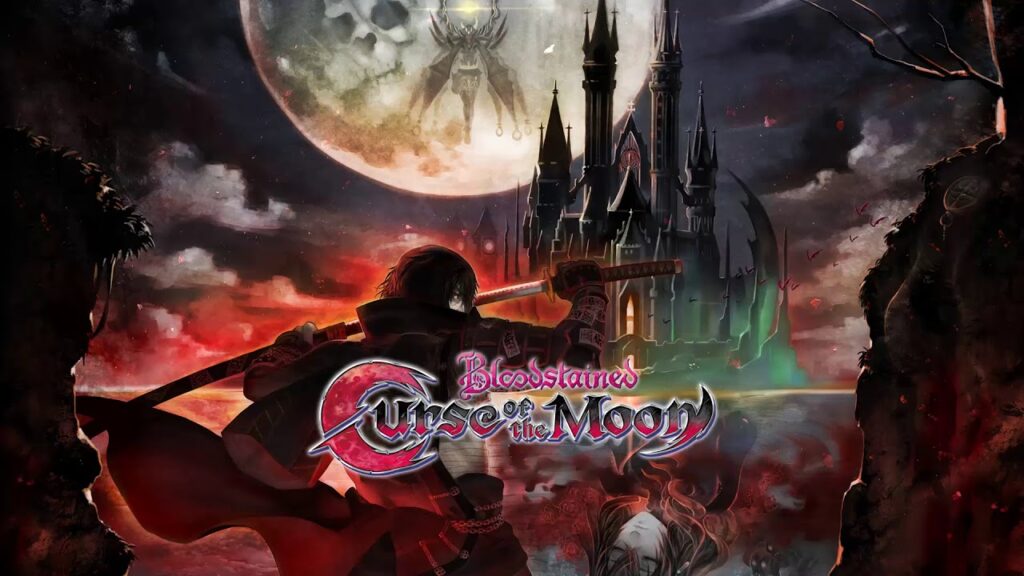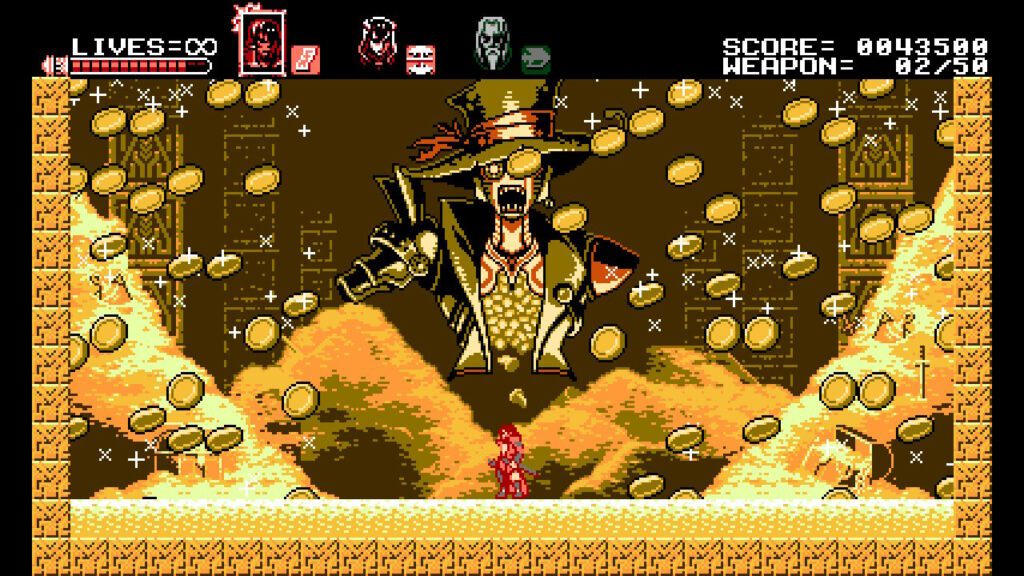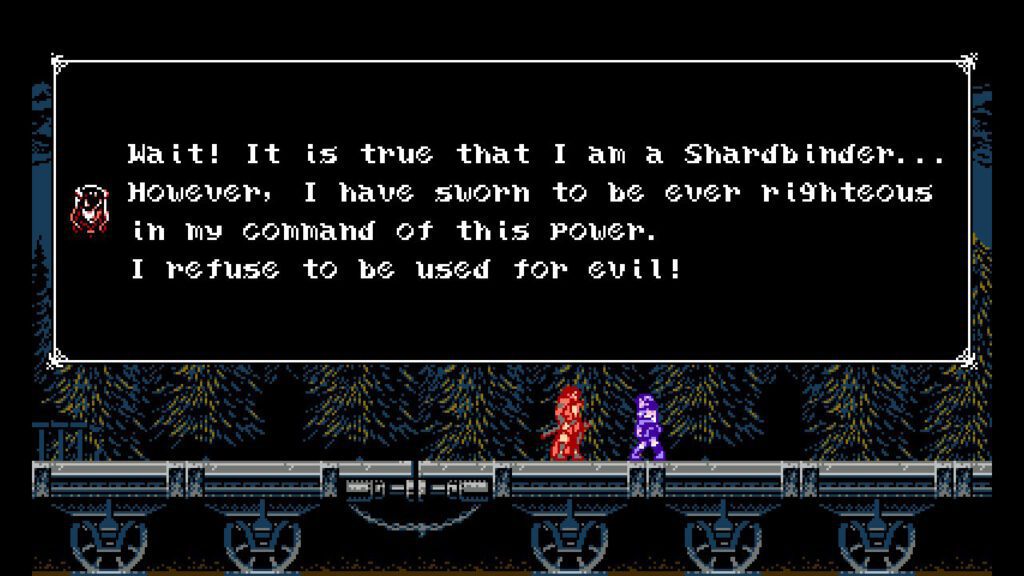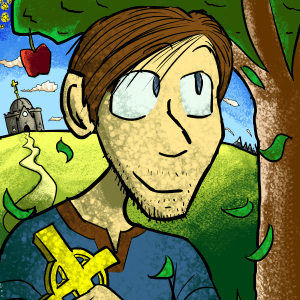So I kicked off this year’s month of spooky reviews with a 2D platformer that may not have been the best fit for the occasion. Granted we locked in that week’s review before deciding to start the theme, but regardless I think I better set things right with another review that’s more suitable for frightening festivities. While I’m at it I might as well overcompensate with another 2D platformer, one whose spirit rose from the grave of a long dead franchise.

In 2015 Koji Igarashi (also known as IGA), ex-Konami developer and former producer of the Castlevania series, launched a crowdfunding campaign to finance a spiritual successor to the much beloved Castlevania: Symphony of the Night called Bloodstained: Ritual of the Night and raised 5.5 million dollars for the project (1.5 million of which was raised in a single day). Part of the project’s stretch goals was the creation of a smaller prequel game that paid homage to the original 8-bit Castlevania trilogy, a job that would be handed off to development studio Inti Creates who are experienced in making these sorts of retro throwback games. The finished product, Bloodstained: Curse of the Moon, was released in 2018 for the PC, Playstation 4, Playstation Vita, Xbox One, Nintendo Switch, and Nintendo 3DS. The game certainly has the talent behind it, but the real question is does it capture the essence of those classic Castlevania titles it seeks to emulate?
Though it was originally pitched as a prequel to Ritual of the Night, the story of Curse of the Moon plays out more like an alternate scenario with many of the same characters placed into different contexts. The protagonist is Zangetsu, a swordsman from the east afflicted by the titular curse of the moon who senses the presence of a powerful demon and seeks to destroy it. It’s a pretty straight forward premise, but works well enough as an excuse to travel from one spooky location to the next and take down some monsters along the way. The game’s ending is affected by how the player chooses to interact with Miriam, Alfred, and Gebel, the game’s other major characters. These interactions also affect gameplay so I’ll explain more about them later. Overall though, the story isn’t particularly good. This is mostly due to the fact that much of the information given about the characters and setting is often pretty vague and probably should have been fleshed out a little more.
The game’s visual and audio direction are a direct recreation of the 8-bit era of gaming with a few modern flourishes here and there. The characters, monsters, and stages are all made with large blocky pixels, but use a wider range of colors than was possible in the 1980s to give them a bit more depth and detail. Being a successor to Castlevania, all the environments are appropriately spooky, but also quite varied including an abandoned train station, a frozen cavern, a haunted ship, and several others. The monsters are also quite creepy and fit the setting really well, though these demonic invaders aren’t nearly as memorable as the classic horror movie tropes that defined Castlevania save for a few of the boss fights. The music is also really solid with catchy melodies and dark foreboding tones all done in an old school chiptune style.

Looks like Zangetsu doesn’t take bribes. Bank probably doesn’t accept demon coins.
Curse of the Moon is a fairly standard 2D platformer. The player has to make their way to the end of the stage while jumping over obstacles and defending themselves from enemies, culminating in an encounter with a boss enemy before moving on to the next stage. Zangetsu comes equipped with a sword to attack enemies with as well as an assortment of powerful subweapons that cost mana to use, but can be very useful in certain situations. The player can restore their health and mana by defeating enemies and breaking lanterns as well as increase how much of these resources they can have by finding special items placed in hard to reach areas. The boss fights are easily the most standout moments in the game for me. Not only do they have memorable designs, but they also have big last ditch effort attacks they use when they’re on their last legs, ensuring every fight ends with a bang.
As they progress through the game, the player will also come across Miriam, Alfred, and Gebel who can be recruited onto Zangetsu’s team in a system very similar to Castlevania III: Dracula’s Curse. These characters each have their own special abilities that allow them to access shortcuts that Zangetsu cannot reach on his own and the player may switch between them at any time. Alternatively, the player can choose to kill these characters when first encountering them to unlock a new ability for Zangetsu. Furthermore, the player can simply choose to ignore these characters and continue playing as Zangetsu without any allies or upgrades. Choosing to recruit, kill, or ignore these characters can really shake up how the game is played quite a bit and combined with the fact that they lead to different endings in the story gives this otherwise short adventure quite a lot of replay value.

Miriam is easily the most heroic of all the playable characters. Definitely my favorite of the four.
The player is also given the choice between a veteran mode and casual mode. Veteran mode gives the player a limited number of lives and makes enemy attacks knock the characters backwards, emulating the “tough as nails” difficulty of old school video games. Casual mode on the other hand gives the player infinite lives and removes knock back from enemy attacks which makes things much more manageable for those less experienced with hard retro games. Overall Curse of the Moon’s gameplay is very robust, managing to faithfully recreate the experience of the games that inspired it while also having enough new ideas to stand on its own.
As for what interest a Catholic might have in Curse of the Moon, I think the whole premise of battling against demons will certainly draw some attention. The game might present this struggle as a physical confrontation, but for us the true danger of the demons is spiritual. We may not have a sword like Zengatsu to fight our demons , but if we remain steadfast in our faith and devoted to our prayers (a rosary could be considered a spiritual weapon against said demons), God’s love will shield us from any evil spirit.
All things considered, Bloodstained: Curse of the Moon is a very strong start to the Bloodstained franchise. The retro esthetic, catchy music, tight gameplay, and cheap asking price make it a great way for Castlevania fans to scratch that itch. Even for those who aren’t familiar with spooky gothic platformers, Curse of the Moon is a scary good place to start.
Scoring: 88%
Gameplay: 5/5
Visuals: 4/5
Sound: 5/5
Story: 3/5
Replayability: 5/5
Morality & Parental Warnings: In Bloodstained: Curse of the Moon, players fight a wide variety of demons and monsters using various kinds of weapons and magic spells. The game’s dialogue namedrops terms like alchemy and shardbinders which are vaguely defined, but seem to be in reference to forms of dark magic. The boss of stage 6 known as Bloodless is a rather sexulized demoness who attacks with weaponized blood and is probably the most graphic portion of the game.
